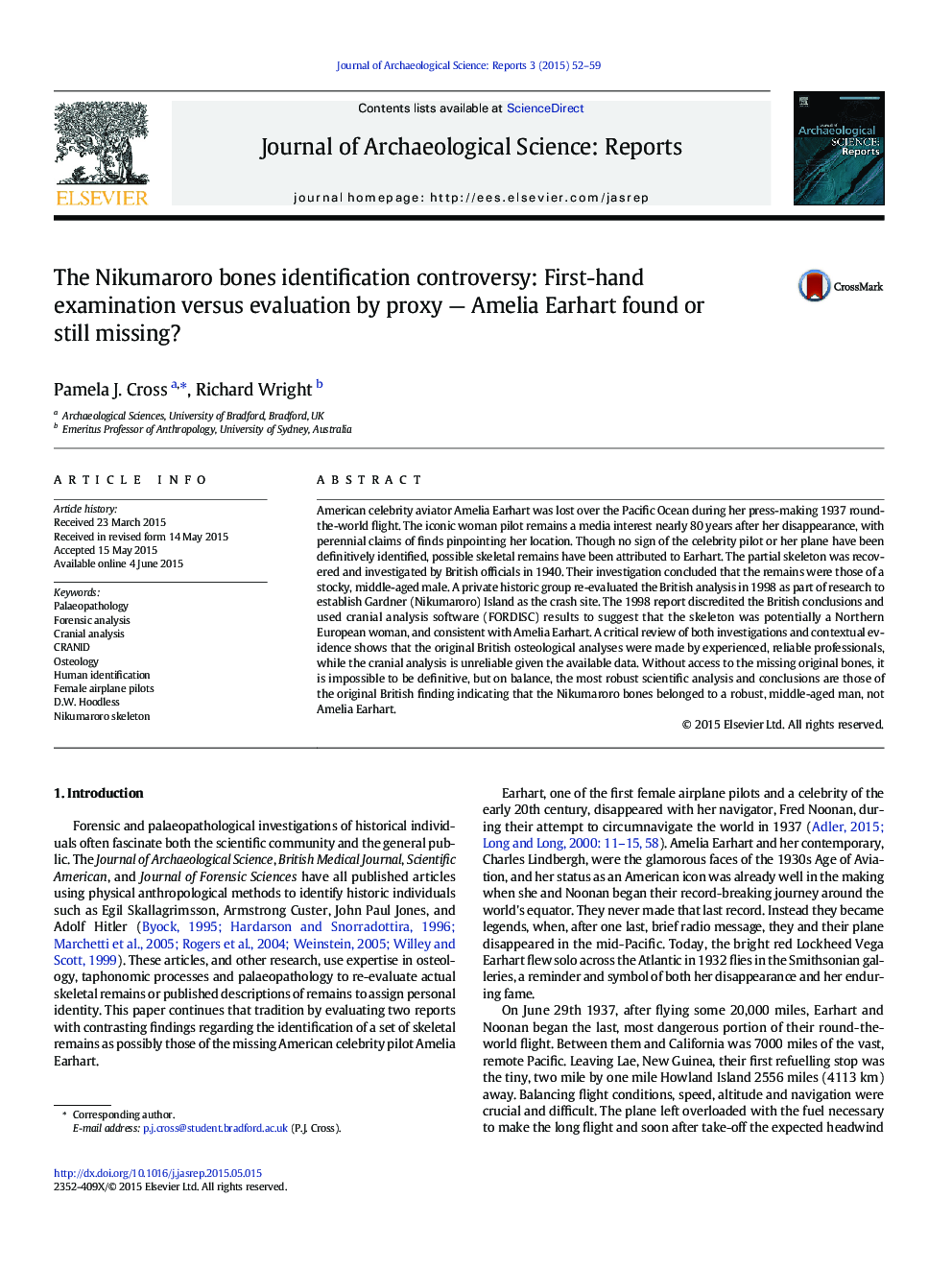| Article ID | Journal | Published Year | Pages | File Type |
|---|---|---|---|---|
| 7445908 | Journal of Archaeological Science: Reports | 2015 | 8 Pages |
Abstract
American celebrity aviator Amelia Earhart was lost over the Pacific Ocean during her press-making 1937 round-the-world flight. The iconic woman pilot remains a media interest nearly 80Â years after her disappearance, with perennial claims of finds pinpointing her location. Though no sign of the celebrity pilot or her plane have been definitively identified, possible skeletal remains have been attributed to Earhart. The partial skeleton was recovered and investigated by British officials in 1940. Their investigation concluded that the remains were those of a stocky, middle-aged male. A private historic group re-evaluated the British analysis in 1998 as part of research to establish Gardner (Nikumaroro) Island as the crash site. The 1998 report discredited the British conclusions and used cranial analysis software (FORDISC) results to suggest that the skeleton was potentially a Northern European woman, and consistent with Amelia Earhart. A critical review of both investigations and contextual evidence shows that the original British osteological analyses were made by experienced, reliable professionals, while the cranial analysis is unreliable given the available data. Without access to the missing original bones, it is impossible to be definitive, but on balance, the most robust scientific analysis and conclusions are those of the original British finding indicating that the Nikumaroro bones belonged to a robust, middle-aged man, not Amelia Earhart.
Related Topics
Social Sciences and Humanities
Arts and Humanities
History
Authors
Pamela J. Cross, Richard Wright,
